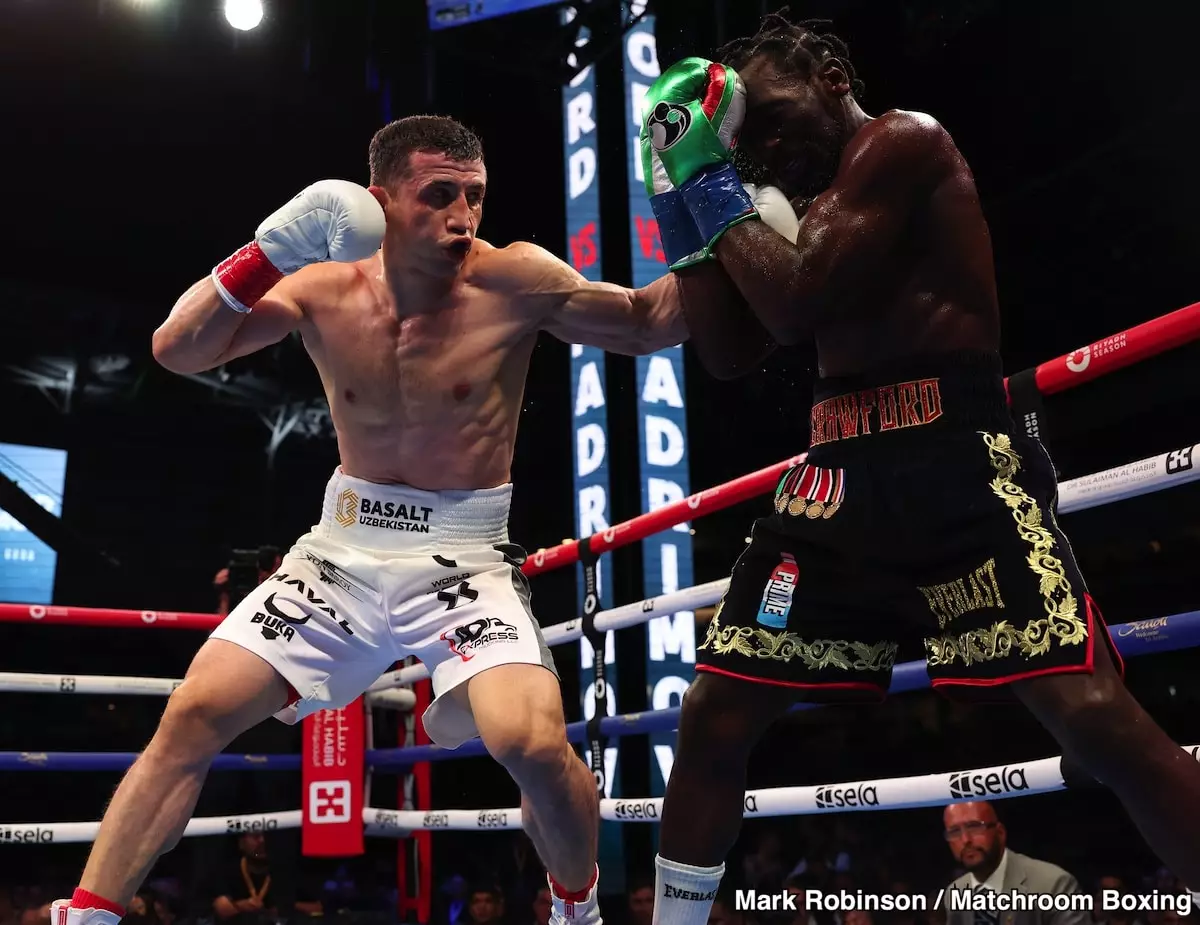Boxing is a sport steeped in tradition and fueled by the desire for greatness. However, as careers progress, certain truths emerge that can lead to evaluation. In Terence Crawford’s recent fight against junior middleweight champion Israil Madrimov, we witnessed not merely a clash of fists but a revealing window into the psyche of fighters, age’s relentless march, and the nuances of motivation. Boxing coach Roy Jones Jr. has not only commented on this bout but has also offered an array of insights that warrant scrutiny.
Roy Jones Jr. insists that Crawford’s underwhelming performance in the ring stems from unforeseen challenges rather than a lack of motivation. Crawford faced a relatively inexperienced opponent, Madrimov (10-1-1, 7 KOs), who despite his limited pro bouts, brought a commendable amateur record into the match. The implication drawn is that Crawford may have underestimated Madrimov, which created an environment void of the necessary urgency that often propels fighters to exhibit their best selves.
However, this claim of underestimation unravels a deeper issue: the level of competition Crawford has faced throughout his career. While he has earned accolades and belts across three divisions, many of the fighters he dominated—such as Errol Spence and Jeff Horn—have not been universally recognized as top-tier talent in their primes. This raises the question: has Crawford been shielded from the rigors of prime opposition to the detriment of his preparedness for tougher bouts? Even as Jones claims Crawford lacked the motivation to elevate his game against an opponent seen more as a stepping stone than a legitimate threat, this understanding opens up a can of worms about Crawford’s entire career trajectory.
At 37, the encroachment of age cannot be dismissed as a contributing element in Crawford’s lackluster showcase against Madrimov. Fighting only once a year across four consecutive years can lead to diminishing returns regarding sharpness, conditioning, and overall fight readiness. Age is an inevitable adversary, robbing fighters of their innate explosive qualities and reflexes. Moreover, as Jones outlined, Madrimov wielded impressive amateur credentials with over 300 fights, which introduced a different kind of threat that Crawford had not encountered before. This suggests that regardless of the opponents Crawford faced prior, Madrimov had the skills to induce anxiety and challenge Crawford in ways most prior fighters hadn’t.
Jones adds that Crawford found it difficult to galvanize his mental focus when the stakes did not seem high enough—speculating that a bout with Canelo Alvarez would be significantly different. While it’s true that the allure of a high-stakes fight could ignite a dormant competitive spark in Crawford, it is also revealing that he might only respond with the requisite effort when compelled by the gravity of the situation. This line of reasoning could potentially unmask weaknesses in Crawford’s boxing mentality.
Critics question whether Crawford is primarily motivated by financial gain rather than the pursuit of legacy. Recent discussions have hinted that he might prefer to collect a hefty paycheck from a fight against Canelo Alvarez rather than seeking to prove his prowess against contenders like David Benavidez or Caleb Plant at 168 pounds. To the boxing community, this approach evokes skepticism about Crawford’s true competitive spirit.
When Roy Jones Jr. presents Crawford’s potential bout with Canelo as one that would ignite Crawford’s competitive fire, fans are quick to express doubts. When juxtaposing Crawford’s meteoric rise against elite athletes versus merely collecting titles, he may be perceived as someone eyeing retirement funds rather than securing a legacy cemented through fierce competition.
There’s an underlying concern in fans’ skepticism: watching a champion shy away from challenging contests while focusing on high-reward scenarios creates a narrative that boxing purists resent. A champion seeking the easy path, rather than opting for demanding fights, undermines the notion of a warrior’s spirit that boxing aims to encapsulate.
As Terence Crawford moves forward in his career, the pivotal questions remain: Can he adapt to the challenges posed by stronger, young contenders? Is his pacing and fight preparation strong enough to allow him to elevate his game against seasoned fighters? There also lies a glaring truth: the ongoing focus must not solely be on retirement checks, as the blood, sweat, and tears he invests in the ring outperform any briefcase bundled with cash.
The conversations initiated by Roy Jones Jr. force a deeper introspective examination of Crawford’s contributions to the sport and, more significantly, to his legacy. While optimism exists surrounding Crawford’s potential match-ups, what fans truly yearn for are performances that rekindle interest in the artistry, tenacity, and spirit of boxing, rather than a mere cash prospect. Only time will tell if Crawford can rise to this unique challenge.

